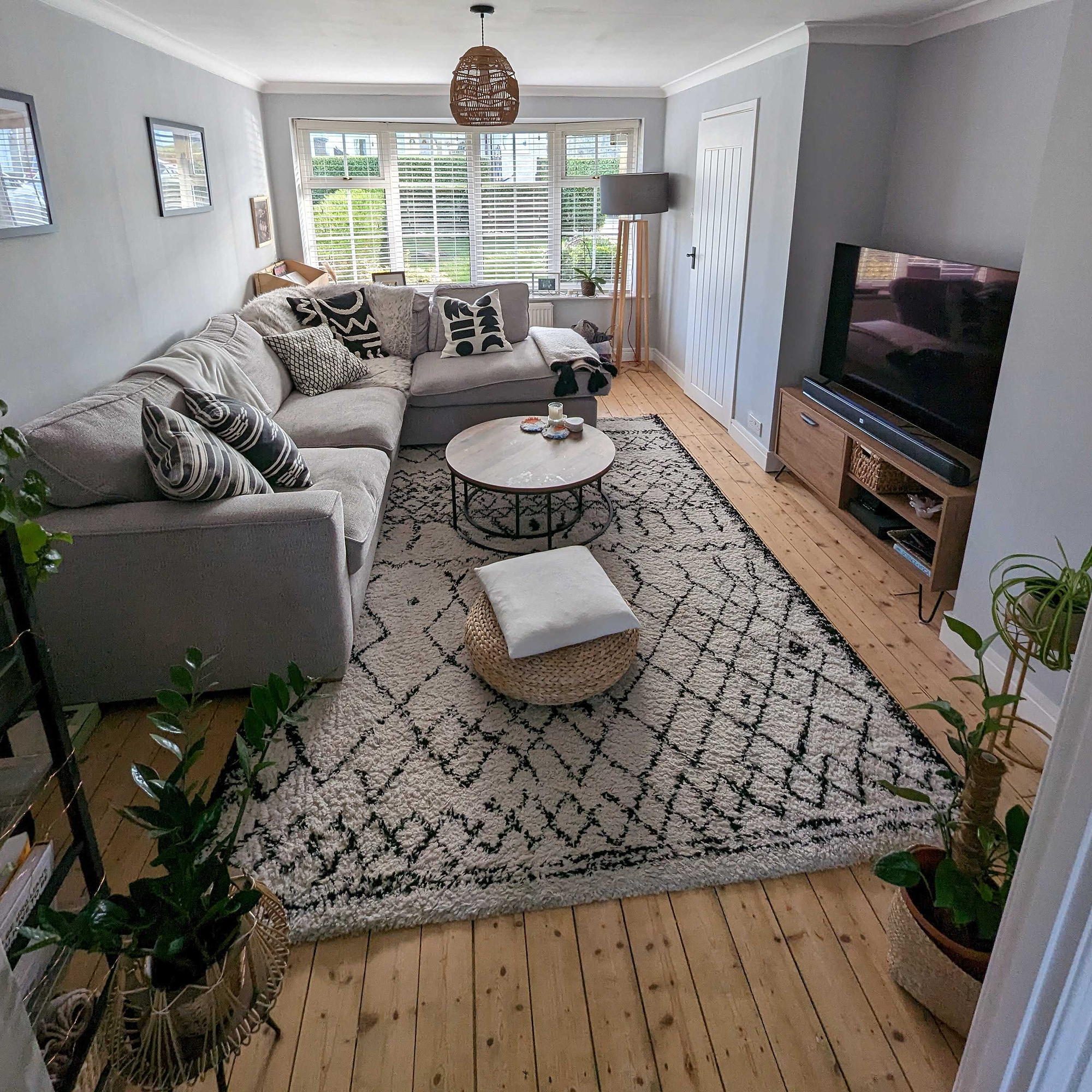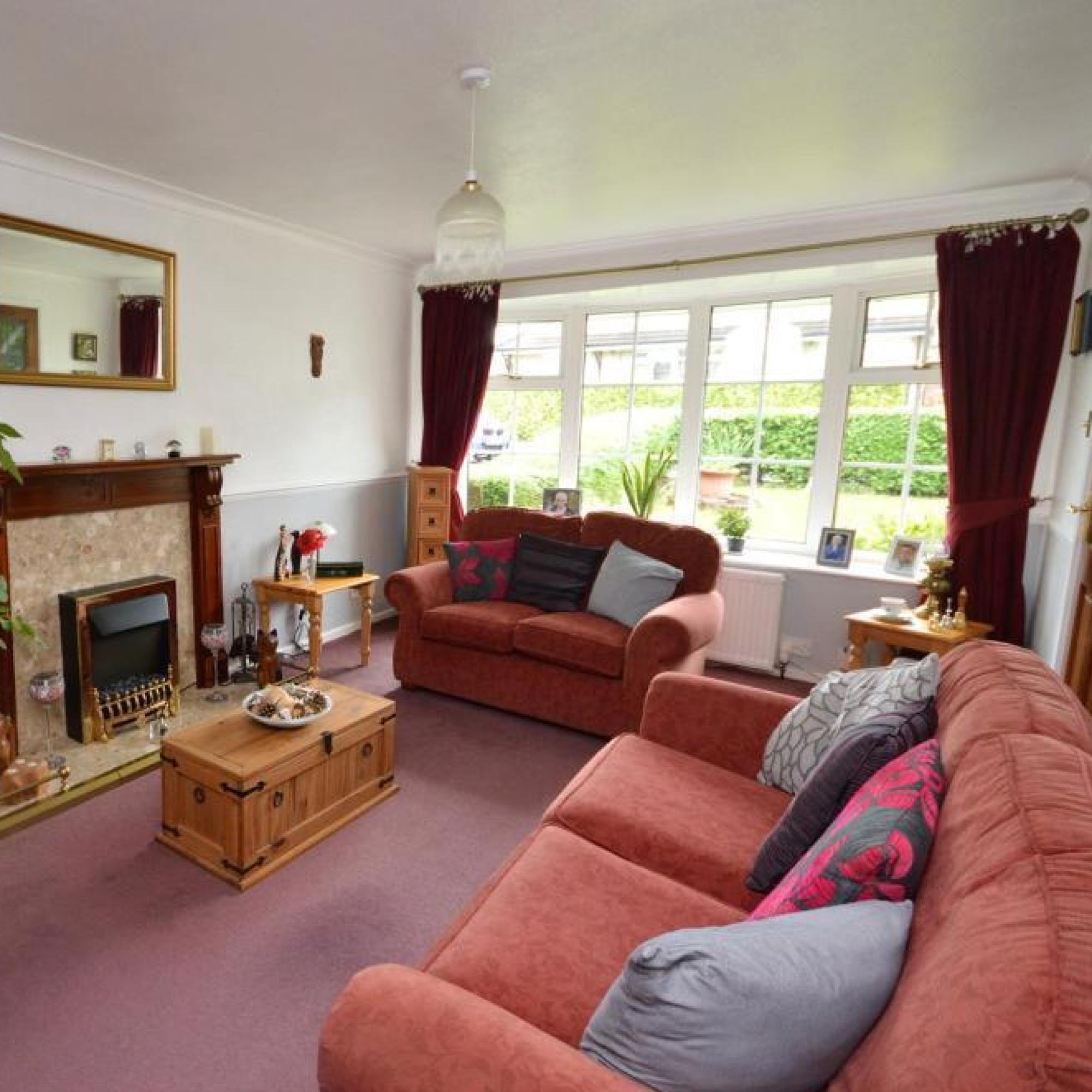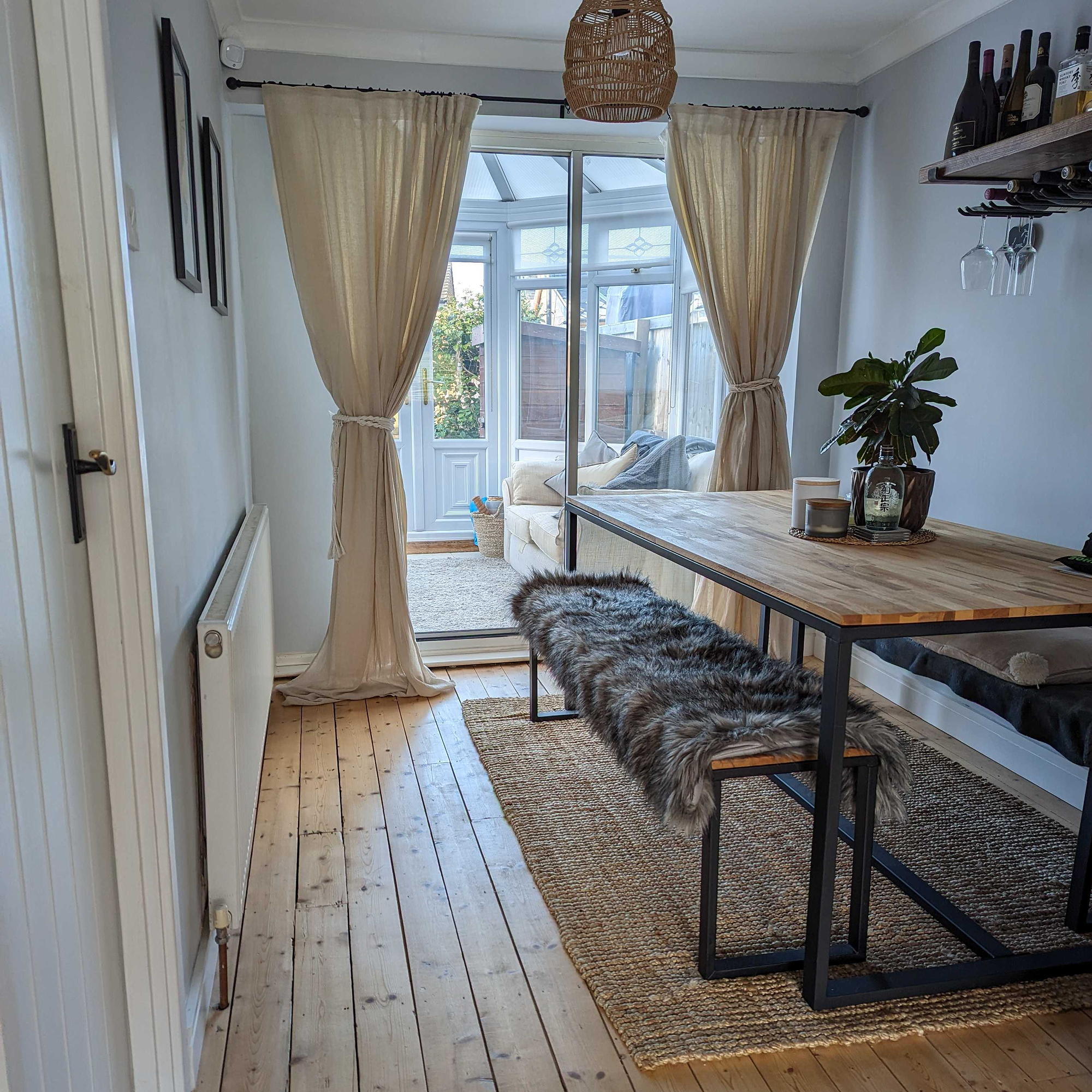
Renovating your new property can be costly – there's the paint, flooring and furniture to consider, not to mention accessories. It's no surprise, then, that we can often find ourselves looking for easy DIY projects to update our homes, however one couple had a lucky break when they discovered a surprise feature that saved them money, time and effort.
Lorna and her partner from Leeds were completely transforming their home when they came across something that had been on their wish lists…
Living room makeover
Ripping up the original carpet, the couple couldn't believe it when they found wood flooring underneath. 'All of my Pinterest boards featured wood flooring,' says Lorna, 'and we'd planned on buying some sort of laminate or wood flooring anyway as we knew we liked it. It was a nice surprise when we tore up the red carpet that the original owners had and saw that the floorboards were in pretty good condition.'
Before

The couple were keen to change the dated decor downstairs, but weren't prepared for what the carpet in the living room was hiding. 'We'd actually budgeted to spend a lot more than we did, as we thought we'd have to buy new flooring entirely, but restoring the existing originals turned out to be much cheaper,' says Lorna. 'We hired a sander, which cost about £50 for the weekend, and then we applied a varnish that cost about £40.'
After

Painted and furnished, the new-look living room feels cosy and modern, with the wood floors bringing a warmth to the space.
'It took us a weekend to restore the floors,' says Lorna, 'and it was pretty easy. It was definitely a dusty job but probably easier than laying new flooring. We did need to enlist the help of parents but we managed to do it all ourselves for just £90.'

The living room wasn't the only space to benefit from the wooden flooring, with the dining area echoing the neutral, rustic scheme.
So, if you think you may have wood flooring hiding under old carpets, what's the best way to go about restoring it? 'If you’re taking up old carpet and suspect that you may have solid wood flooring underneath, you should try to be careful not to damage them in the process,' recommends Carolina Hansson, head of design at Luxury Flooring & Furnishings.
'Firstly, remove any carpet strips that may be screwed in under doorways. Lift a corner of your carpet carefully using a pair of pliers or a pocket knife. Underneath you should find a layer of underlay.
'Underlay can be fitted in various different ways and it will be difficult to tell how it has been attached to the flooring underneath,' Caroline continues. 'When you’re taking up the underlay, be careful not to lift it too abruptly. You should peel it back gently, otherwise, you’ll risk damaging the floor underneath.'
'Once you’re left with the bare floor, you’ll need to sand down the surface layer to get it looking its best. The best way to go about this is to hire a floor sander which you can use yourself – make sure you have studied its safety advice before use.
'Using a coarse sandpaper with the sander, start to work the machine in the direction of the wood grain. Be careful around the edges of the room and work in lines to ensure an even finish. Once you've sanded the whole area, repeat using lighter grit sandpaper.'
'Finally, if you'd like a darker finish to your wood floor, apply a stain and then apply a polyurethane finish to help seal and protect it.'







